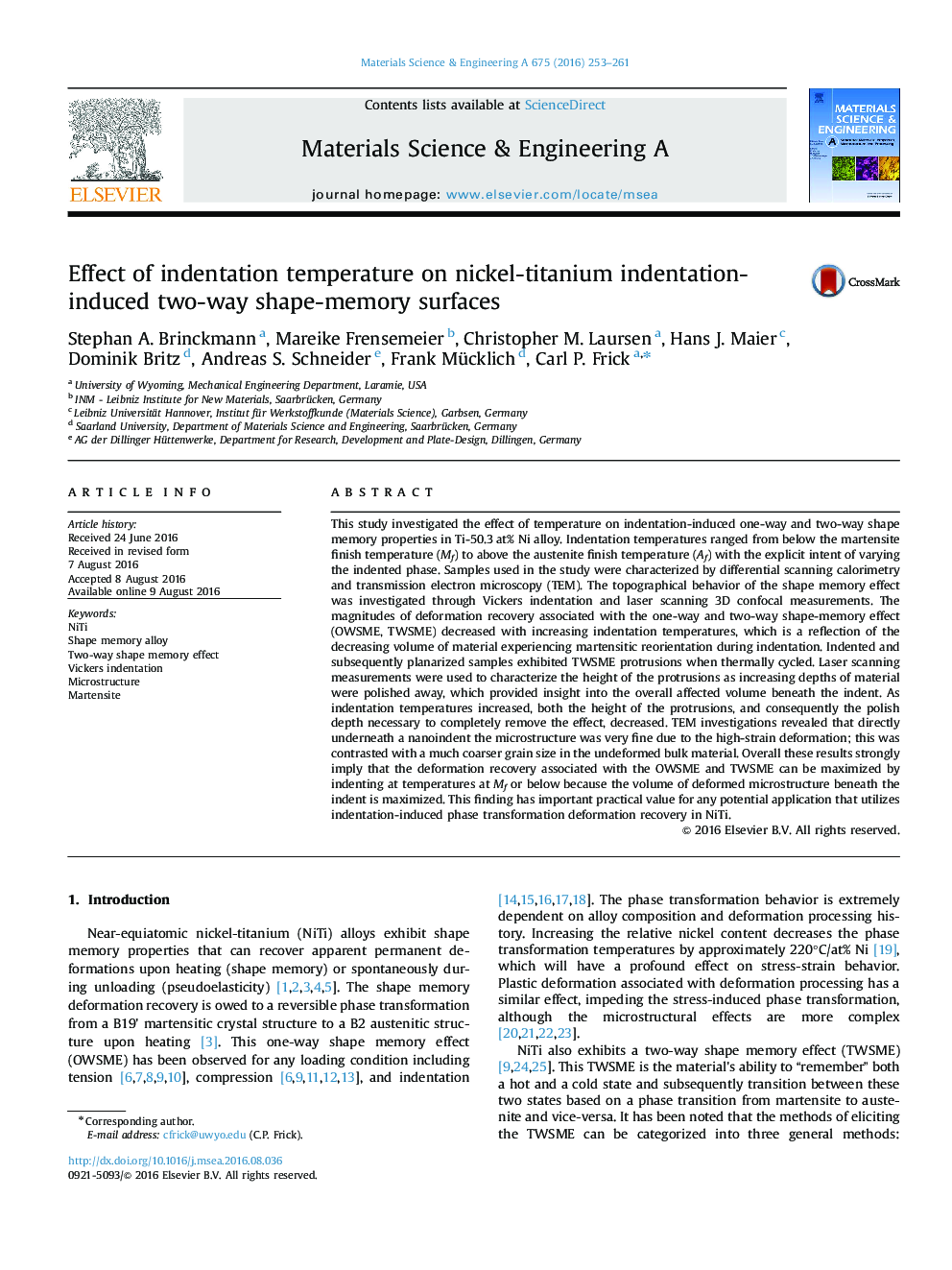| کد مقاله | کد نشریه | سال انتشار | مقاله انگلیسی | نسخه تمام متن |
|---|---|---|---|---|
| 1573034 | 1514668 | 2016 | 9 صفحه PDF | دانلود رایگان |
This study investigated the effect of temperature on indentation-induced one-way and two-way shape memory properties in Ti-50.3 at% Ni alloy. Indentation temperatures ranged from below the martensite finish temperature (Mf) to above the austenite finish temperature (Af) with the explicit intent of varying the indented phase. Samples used in the study were characterized by differential scanning calorimetry and transmission electron microscopy (TEM). The topographical behavior of the shape memory effect was investigated through Vickers indentation and laser scanning 3D confocal measurements. The magnitudes of deformation recovery associated with the one-way and two-way shape-memory effect (OWSME, TWSME) decreased with increasing indentation temperatures, which is a reflection of the decreasing volume of material experiencing martensitic reorientation during indentation. Indented and subsequently planarized samples exhibited TWSME protrusions when thermally cycled. Laser scanning measurements were used to characterize the height of the protrusions as increasing depths of material were polished away, which provided insight into the overall affected volume beneath the indent. As indentation temperatures increased, both the height of the protrusions, and consequently the polish depth necessary to completely remove the effect, decreased. TEM investigations revealed that directly underneath a nanoindent the microstructure was very fine due to the high-strain deformation; this was contrasted with a much coarser grain size in the undeformed bulk material. Overall these results strongly imply that the deformation recovery associated with the OWSME and TWSME can be maximized by indenting at temperatures at Mf or below because the volume of deformed microstructure beneath the indent is maximized. This finding has important practical value for any potential application that utilizes indentation-induced phase transformation deformation recovery in NiTi.
Journal: Materials Science and Engineering: A - Volume 675, 15 October 2016, Pages 253–261
